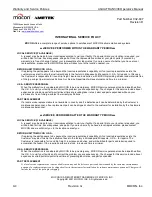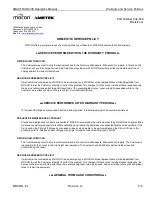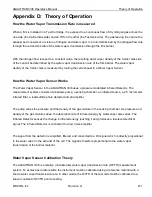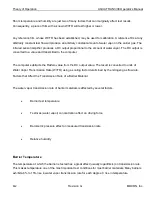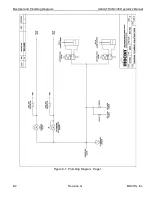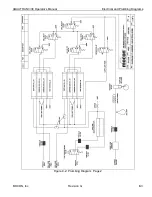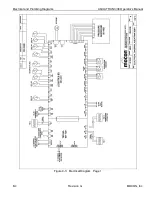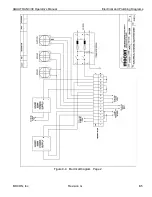
Preparing RH Calibration Standards
AQUATRAN 3/38 Operator’s Manual
F-2
Revision G
MOCON, Inc.
Preparing a High-Level Calibration Standard
A High-Level RH Calibration standard can be prepared using a salt solution as follows:
1.
Chose the appropriate salt for the calibration standard. See “Choosing a Salt for a
Calibration Standard” in this appendix.
2.
Prepare a saturated salt solution. See “Preparing a Saturated Salt Solution” in this appendix.
3.
Thoroughly clean a calibration flask and flask stopper. Rinse the calibration flask and flask
stopper using distilled water.
4.
Thoroughly dry the calibration flask and flask stopper before proceeding to the next step.
5.
Fill the flask ¼ to ½ full using the salt solution.
6.
Add several grains of the salt used in the solution to the filled flask. This will provide a
nucleation point to prevent super-saturation.
7.
Tightly seal the flask using the Flask Stopper.
8.
Wait four to six hours to allow the solution to come to equilibrium at the desired temperature
before use.
Preparing a Low Level Calibration Standard
A Low Level RH Calibration standard can be prepared using a molecular sieve as follows:
1.
Thoroughly clean a calibration flask and flask stopper. Rinse the calibration flask and flask
stopper using distilled water. They must be completely dry before use.
2.
Fill the flask ¼ to ½ full with the molecular sieve. Molecular sieve (part number 930-009) is
available from MOCON.
3.
Tightly seal the flask using the Flask Stopper.
4.
Wait 2 to 3 hours before use.
Preparing a Saturated Salt Solution
1.
Fill a clean glass beaker with distilled water. Leave enough room in the beaker so the water
will not overflow when the salt is added to the beaker.
2.
Place the beaker on a hot plate. The hot plate should be held at a temperature of
5 °C (10 °F) above the temperature at which it will be used.
3.
Slowly add small amounts of the appropriate salt to the water.
4.
Stir gently until no more salt will dissolve in the water when stirred. At that point, the water is
saturated. There should always be some un-dissolved salt in the solution.
5.
Remove the salt solution from the heat.

